TRANSCRIPT
Smoke Signals Radio Speaks with Stacy Huff
March 16, 2018
INTRO:
You’re listening to Smoke Signals Radio, a Smoke Signals Media Production.
I’m datejie green
Today I’m speaking with Stacy Huff of Akwesasne Mohawk Territory. Stacy is a midwife trained in the healing powers of cannabis and other plant based traditional medicines. She’s also a grandmother and an activist with deep roots in land and water protection.
I’m meeting Stacy in Tyendinaga Mohawk Territory, where she and her children are visiting relations. She is here also as co-organizer of the Indigenous Cannabis Cup coming up from May 18-21.
Stacy starts me off with a tour of the Cup grounds. It’s a beautiful winters day. The sun is high and bright, and the wind is powerful. Stacy tells me, “This North Wind, is known as “Kadaswat,” ever playful, sometimes vicious.” She says she’s grateful that today is a playful day, that Kadaswat must be excited about the topic of healing!
We retreat inside to get out of the cold and talk about indigenous cannabis.
datejie: Stacy, thanks so much for speaking with me today. If you could tell me a little bit about your knowledge, your family’s knowledge of cannabis and the indigenous traditions and indigenous practice.
Stacy: Okay, see for me it started way before I was born. This has been a traditional medicine for us for years and throughout time we came to use it for different medicines. And it’s been used in ways that heal the people. I’ve been a midwife. I come from a long line of midwives and it’s also been used to slow down premature labour right up to different illnesses learning what tinctures, what medicines, what strains are good and… for our people there’s a lot of depression, anxiety, PTSD and this medicine works for the mind. Because I truly believe that when you heal the mind, the body follows and that’s what we’re trying to promote with this Cannabis Cup is the healing of the people – to let them know and to understand that it is a medicine and teach them how to use it. Then we’re going to have the educational workshops, informational workshops on just exactly that – different ways to heal different illnesses.
I’ve been making medicine for years. Lately it’s been for cancer patients. Different kinds of cancer, different strains that we use and it works, even within my own family. I have two, two of my daughters, one had breast cancer. She beat it. It’s gone. Another one had MS. It’s in remission. It’s gone. Hopeful to never come back again. So even personally, my own family, we use this, we believe in this. We know that it works.
For myself, I’ve been using it for years. I have degenerative disc disease. It’s gone into my hips, my hands. I use it daily and I am walking proof that it works. They had told me years ago that I had one year to walk and… being the way that I am, I said, “No, this isn’t happening.” And I got even more into the medicine and actually started using it, changed my lifestyle, changed the way I eat, exercise more. So yeah, I’m walking proof that this works.
datejie: You are a walking, moving proof. You look the picture of fitness.
Stacy: Yeah, not bad for 54 years old. My birthday’s coming up. March 21st and I feel good. I feel good and I want others to feel good. I want others to heal. For me that’s what this is about, is actually healing the people.
datejie: On that road to healing and with that goal of healing in mind, how much of it is about education?
Stacy: A lot of it is education, because people have… it’s like a stigma and it’s been criminalized and they think that it’s bad thing. So if a lot of this is to educate people to let them know that this is a medicine, that this is a good thing and for some they’ve been using it for years and there’s going to be a lot of people here that’s going to come to educate. So I’m looking forward to that. The different workshops that we’re going to have a lot of is informational, educational and I’m really looking forward to it.
datejie: You’ve spoken about being a midwife and learning how to use the plant, what types of, what forms of the plant or what forms of ways to consume I’m sure that includes what doses, what the timing, it sounds very much like a medical craft or a healing craft.
Stacy: Yeah, it is. To know what medicines that the people need, to know what medicines that the women need, because there’s also others that you start at certain times within the pregnancy and about six weeks before we start what we call Slippery Elm and that helps to. We get the women, get them happening. There’s medicines that we use once a day first to help to clean them out, to make sure everything’s clear and clear the blood to keep them healthy, keep that milk going. Yeah, we’ve been doing this since the beginning of time.
ADVERTISEMENT: Mukwa Botanicals mukwabotanicals.com
datejie: As someone who uses cannabis as an end product, what’s the importance of learning how to grow it yourself as well?
Stacy: Oh, that too. It’s to be able to self-sustain, to be able to self-sustain, to be able to heal yourself to know the process of what to do with the growing of it, the drying of it and then to turn it into a medicinal property whether it’s the tinctures or the edibles, you know. There’s different ways of consuming it. There’s different ways of getting it into your body. There’s different dosages for different illnesses and that’s what I’m hoping people are going to learn.
datejie: In terms of your own journey your own walk that you’ve taken in terms of how you see yourself, you say you’ve been a midwife, but tell us a little bit more about your backstory and how your family sits. You’re from Akwesasne Mohawk Territory, right? What does that meanWhat is that?
Stacy: I come from a long line of activists. Starting back and Ganienkeh my family was one of the 300 families that we need to cover the land and started in a new community and community was based on the Great Law. Everything about it the way they followed the way they handle situation was all based on the Great Law. Living it, like truly living it, as a community working together.
datejie: For those who don’t know the Great Law, can you give us just a little idea of your notion of it? What’s the most important notion that people who have not yet had a chance to study the Great Law? What we need to know the most?
[00:08:00]
Stacy: The three basics is peace, power, righteousness, but the first kinds of the first and main concept of the Great Law is peace, maintaining peace within the whole Confederacy and the process is that we take even when something happens… Like we have the warrior society, but that’s the very last ones that we call in. We don’t call in them until all peaceful avenues have been exhausted. Through everything that we do, the burden of peace is heavy. It’s not an easy thing. It’s not an easy way of thinking, because you don’t just react to something. It’s like the responsibility, the ability to respond.
datejie: Respond instead of react.
datejie: Exactly and to be able to handle the situation in a peaceful manner, all situations in a peaceful manner. The end result of all the steps and procedures within the Great Law is to obtain and maintain peace throughout the lands.
datejie: That’s what you grew up with?
Stacy: Yeah.
datejie: As your first lessons?
Stacy: Yeah, always how to handle every situation in a peaceful manner.
datejie: So you see you come from a family of activists and the history of activism?
Stacy: Yeah.
datejie: How has the Great Law guided your activism?
Stacy: For myself I’ve been involved in many conflicts throughout the years. Some of them didn’t always end peacefully. Like for example, Oka. Someone was shot, someone was killed and that was a sad thing. Lately, last year I was at Standing Rock and I was there for five months. And that started peaceful. It started out of prayer. It brought the people together, brought thousands of people together, and we tried nonviolent direct actions.
We were met with aggression and it escalated to a point where a lot of people got hurt. And um… yeah the military came right after us and there was nothing peaceful about it. In the end result the camps, the army came in and forcibly removed everyone. A lot of people were arrested. A lot of people got hurt, but that was a hard one because so many people came together that, we couldn’t teach and maintain a peaceful way because there were just too many people. Too many all at once and it was hard to educate the ones that came. Some of them grasped it and some understood, some came knowing it already, but it was hard. It was just so many people, so many fractions and then even within, there were people within that had their own agenda, and that was to stop us. It was really hard. The divide and conquer tactic worked very well and that’s an age-old tactic, divide and conquer. It was used there and… it worked.
datejie: I’ve heard others talk about the Great Law as also the Great Peace: Kayenere:kowa.
Stacy: …Kayenere:kowa.
datejie: How do you see cannabis in relation to the Kayenera:koa?
Stacy: See again it comes to having a good mind, to have a good mind, to have a strong mind and everything that we do and even this whole gathering that’s coming up. I look at it as bringing together a network of people that think the same. We want peace. We want healing. And, as far as the Great Law, it all comes together as peace in your mind, a peaceful way of thinking, a good mind, using a good mind. And even this gathering that’s coming, everyone that’s coming and participating, they want to teach, they want to inform people. They want to help the people and again, to heal the people, because if you heal the mind, the body follows.
datejie: I’ve heard in different situations of indigenous elected officials and other folks who are, some of them, traditional suggesting that cannabis is a mind changer and the connotation when they say that is that it changes the mind in a bad way.
Stacy: That’s what they were raised to believe. They can’t help it. Because, the older generation, that’s what they were taught that it was a drug, that it was a bad thing and they can’t help that. Their mind is set. Their mind is set that way. And, hopefully, as time goes on they’ll realize that it is a medicine and they’ll accept it. Like I know that they do know, but for some reason… they go against it.
datejie: Is it fair or even wise to say that it changes minds in a healing way?
Stacy: That’s what I think. That’s what I believe, but not all people believe like that.
datejie: If you were able to communicate with those folks, the folks who grew up, or whose parents grew up, in the 40s, 50s, 60s and then they came into the world and have spent decades hearing from all kinds of levels of authority that this is a bad thing, what would you most want to say to them in terms of an invitation to come to the Cup and to learn?
Stacy: I would encourage them to open their mind, to come with an open mind, to leave the stigma behind when they come through those gates. And to open their minds and really look and really listen to see what is going on, to understand that it is a medicine. For many of them it’s not their fault. Like I know it’s not their fault. They were raised like that between the residential schools, the damage that was done, the mindset that they had, the influence of the churches and… they were made to be docile. There’s a whole, there’s generations that can’t help but accept what the government or accept what the priests say. They were made to think like that. It’s not their fault. And then they pass that thinking on to their children and throughout what they went through, they were made…they were brought down. Their minds were formed to what the government and what to the outside world wanted them to be.
You’ve got to remember at one time their objective was to kill the Indian… to kill the Indian inside those children and they did for many, for a lot of them. When they came out of the residential schools they passed on that way of thinking, you know, to accept it, their docile way of just accepting it. And that’s what they passed on. But now the younger ones, this generation is knowing that it’s not a bad thing. That cannabis is a medicine and they are accepting it. So for the older ones I don’t blame them, because they were raised to think like that. They couldn’t help it, but it’s changing. It’s evolving as the younger ones are learning and accepting and knowing that it is a good thing, that it is a medicine, that it can help you, that it does cure.
datejie: We’re at a moment where the stigma is coming undone through this intergenerational shift that you describe. But we’re also at a moment where because of laws, because of the laws of Canada and the laws of the provinces and territories, there’s real powerful shift of foot to control cannabis, to control who gets to grow, who gets to sell what is being sold, what is being grown and how it gets to pass from one person to the other.
And this moment also very much threatens to stigmatize, if it’s outside of that very official control. How do you see indigenous cannabis in relation to that movement – and I use the word movement in the sense of it’s a shift and it’s got lots of momentum, I’m not using it in terms of a social movement – but it’s the government movement and it’s a corporate movement, but it doesn’t sound like it has any resemblance to how you’ve come up through your life.
Stacy: Well, put it this way. The government has always controlled any way that we can make money. They’ve always had control of it, whether it was, it doesn’t matter what it is. If it happened to be bubblegum, teddy bears, huh… anything that we were able to financially sustain ourselves, they want control of it. They’ve always wanted control of it.
datejie: Corn?
Stacy: Yeah, the corn.
datejie: Buffalo? Beavers?
Stacy: Baskets…anything.
datejie: Fish.
Stacy: Oh, we can’t even eat the fish anymore… But they’ve always wanted control of it. Like even years ago, the basket makers would have to sneak across the river just to be able to trade, to do their trading, you know for other products. And they had to sneak for that. They wanted to control even of the baskets. It doesn’t matter what it is, the government wants control, they want to be able…
That’s why reservations are here: to keep them together, to keep them controlled. And now people are realizing ‘you don’t have to stay on the reservation.’ There’s a big world out there. Get out there, look, explore, go. You know, I encourage all young people, get out there, go, go experience life and know that there is life outside of the reserve and once they do then they realize how much they’ve been controlled, how much they were told and how much isn’t true. They have to realize it for themselves and experience it themselves.
And so a lot of that… and they come back and they had these ideas, these business ideas, whether it’s whatever the businesses that they decide to go in, if it does good the government will put a stop to it or try to control it. Like for a while there it was cigarettes, gasoline, and they wanted to control that too and it depends on what territory whether the people are ready to stand up and defend it, defend their rights, or if they just accept it and go along with it. Each community is different. So a lot of it is the leaders, the leadership.
Within the Great Law, all laws, all decisions are put before the people. That’s the way it’s designed. We had the clan system and each clan decides on a matter, and then they come together and they discuss it and then something is passed, or it’s denied. And even more to do this day, even within our traditional government that process has been overlooked. The ones that have these titles seem to think that they have the power to make decisions without the people. The people’s input hasn’t been, the process hasn’t been followed through. So that’s the sad part too… that you see these ones that are supposedly title holders, and different ones are saying “No…no…no,” but now the people are even questioning them like “Why are you saying no?” “Why didn’t you ask the people?” “Who did you consult with?” And they’re finding out that the people weren’t even consulted. And yet these letters are written and drawn and signed by these so-called leaders without the people’s input. So even within our system, not even the outside government, within our own government, processes are not being followed. Laws are not being followed. So even that… the people are stepping up, the people are questioning and they’re questioning certain ones. They want clarification, they want information on everything… everything that these so-called title holders are doing, because a lot of it is wrong. It’s wrong for the people. The decisions aren’t helping the people, but that’s slowly changing too.
datejie: Do you see the way that indigenous cannabis is growing in to, at least a movement at Tyendinaga Mohawk territory… What do you see in terms of a potential or a future to shift things? … in terms of control of cannabis sustainable growing and practices and having the impact that perhaps never before happened, which is that indigenous folks involved with cannabis have the opportunity to teach others, outside, to shift that control or to…?
Stacy: Well this is a start. This is the first Indigenous Cannabis Cup. So this is the starting point here. For native territories all across this continent, this is a start. I’m encouraging everyone to come here and network, find out who has the same thinking, who has the like minds. That’s how we are going to do this. Because everyone has gone…. everyone has faced different legal battles in different provinces, different territories, and lot of them are going to be here and do the workshops and inform others what they went through.You know, politically, man just to see… just to come together.
datejie: Same in the States, I suppose?
Stacy: Yeah, same thing, not just Canada, throughout the continent.
datejie: Now there’s some emphasis right now on the flowers and the oils and what can be produced medicinally, but there is also the opportunity with the cannabis plant and what gets left over, not unlike hemp, to use the fibres of the plant for other purposes.
Stacy: Yeah, see even that, my sister Kanahus is going to be come down and she is going to be doing a workshop. Right now she’s at one of these small towns… See, when a pipeline wants to go through, the easiest place to start is usually the smallest, poorest, economically deficient town. So what she’s doing now is, instead of that thousand and one miles of pipeline, to do a thousand and one miles of hemp as a resource for this community. So they’re going to be… that’s what they’re working on right now. So by the time May 18th comes, she’s going to have a world of knowledge to give us. And I’m am looking forward to that.
datejie: Do you see them as separate or parallel in terms of the cannabis movement and the indigenous hemp movement?
Stacy: It’s pretty parallel, because a lot of it is the same. And they’re still facing the same restrictions. Now, even with the hemp, they’re still facing the same restrictions…. and even, it can be used for so much, and there’s so much potential in it, the potential is overwhelming. But again the government will hinder it. They put restrictions on it, because they don’t want them to be self-sustaining.
datejie: In your vision, if freedom is the way forward with cannabis and with hemp, what could you envision? What would be a healed and transformed indigenous world? What would be a healed and transformed Turtle Island?
Stacy: For it to be accepted. For the cannabis to be accepted. To know the medicinal properties, to accept the medicinal properties, to use the medicinal properties, to start the healing. The healing of the people, because it is real. It does work. And for that to be available to everyone, everywhere…. that would be the healing. The healing that I can envision. The healing that I want everywhere.
datejie: Thank you… That’s tough.
Stacy: Uh huh… it is. Because when you go through it yourself, or your children go through it, you want and you ask the universe for help and then it comes. It’s there and then you have to accept it. Once you believe it and you accept it and you use it, it can work for you. It will work. Like I said my own children, myself, have used it and I’ve seen it. It’s a reality and I want others to know that too.
datejie: And then things can move.
Stacy: Exactly. Yeah.
datejie: Stacy how if I want to thank you so much for your time today.
Stacy: You are very welcome.
EXTRO:
I’ve been speaking with Akwesasne healer, activist and grandmother Stacy Huff. She spoke to me on her life’s journey using cannabis medicine in her indigenous practice, and the powerful role that indigenous cannabis holds to transform all our relations on Turtle Island.
As the North wind stirs behind us, she says that “Kadaswat shows us once again that there is a power greater than us, the weather. But no matter what the weather, come May 18th, we will be ready for the crowds to come to the Indigenous Cannabis Cup! Onen ki wahi see you all soon. “
For Smoke Signals Radio, I’m datejie green.


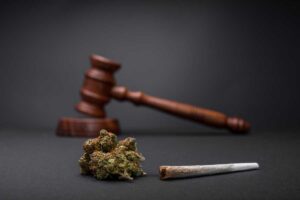
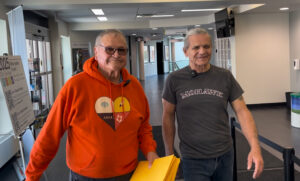

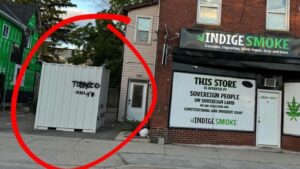
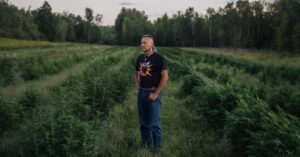
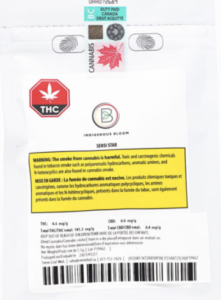

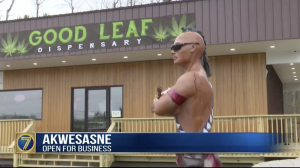
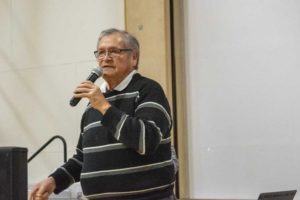
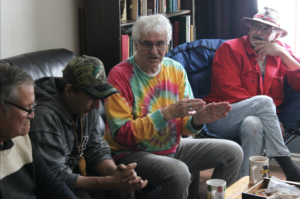
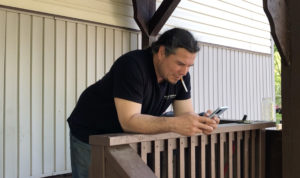
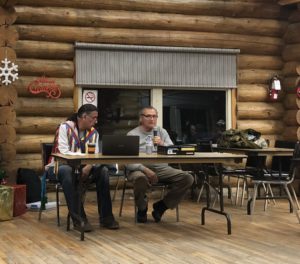

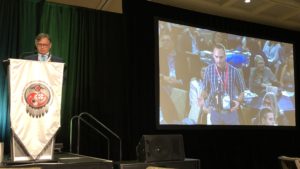
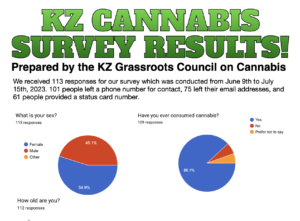
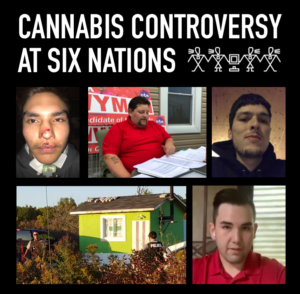


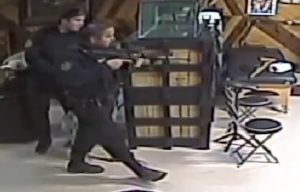
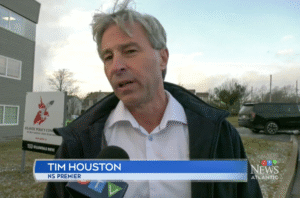

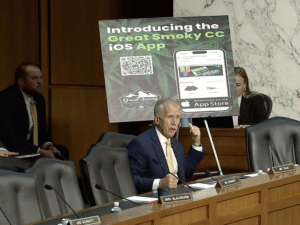
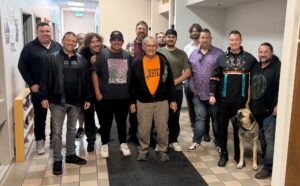

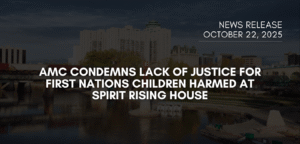
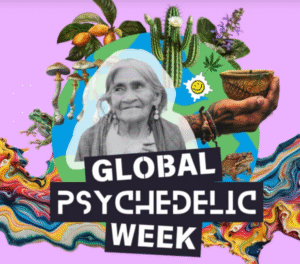
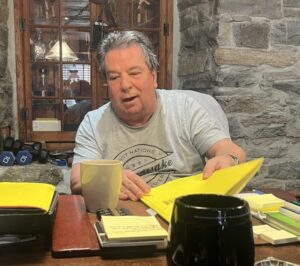

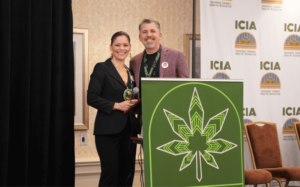

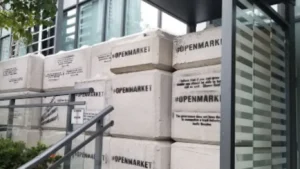
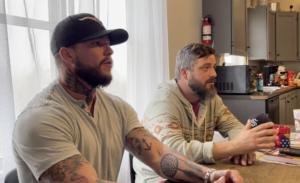
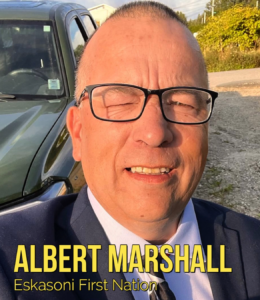
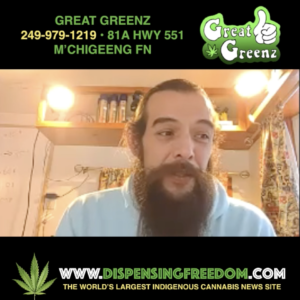
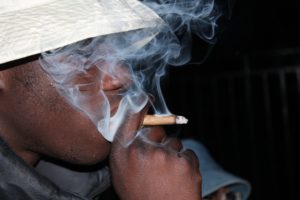
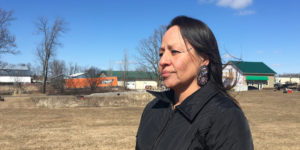

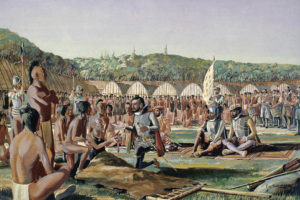
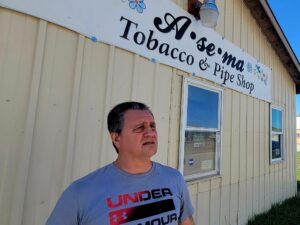
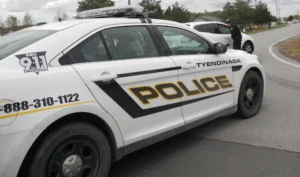
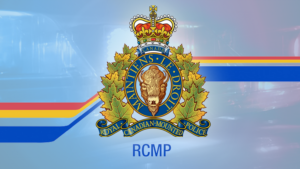
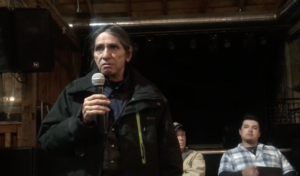
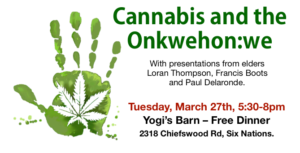
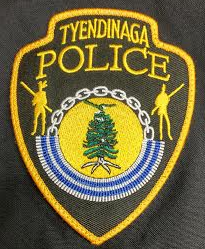
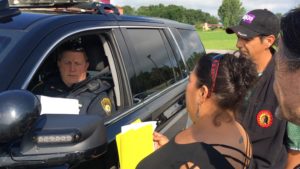
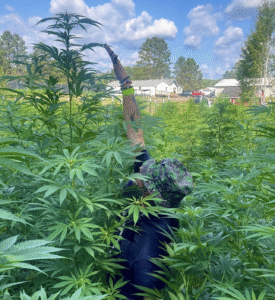
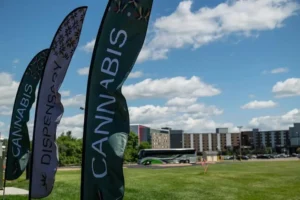
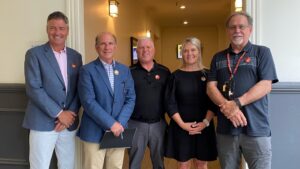
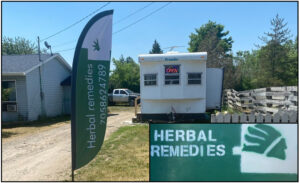


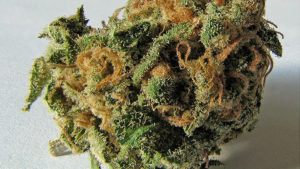
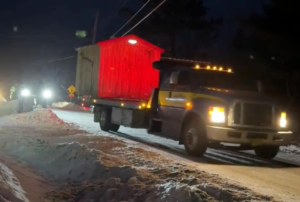

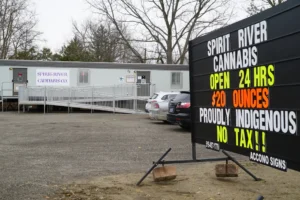
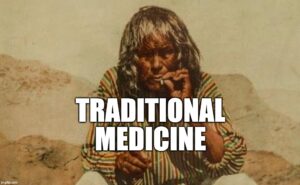
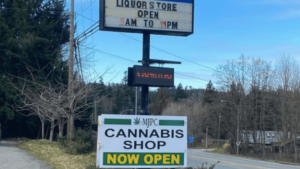

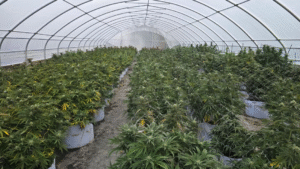


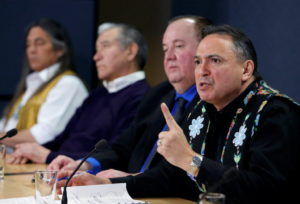
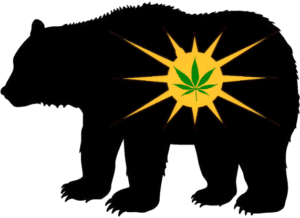
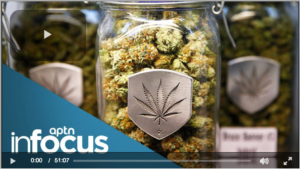

[…] 2018-03-16 – Smoke Signals Media interviews Stacy Huff – complete transcript […]